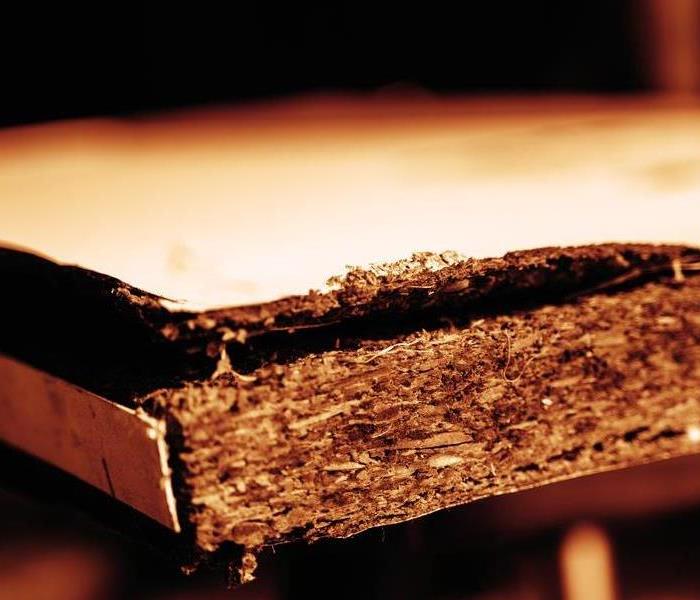What Is Secondary Water Damage?
3/15/2023 (Permalink)
Secondary water damage is very common. It can also be very costly. With secondary water damage, the initial flooding or leak has already occurred and the moisture has been present for an extended period of time. Secondary water damage occurs when there is a large amount of moisture left behind after the initial problem is taken care of.
What is Secondary Water Damage?
Secondary water damage is a form of structural decay that occurs when you don't immediately deal with the source of your primary water damage. It can be caused by any number of things, but it's most often the result of prolonged exposure to moisture.
Secondary water damage is preventable--it doesn't have to happen!
Mold Infestation
Mold grows everywhere, and it will grow on any surface. Mold spores are present in the air all around us, and when they come into contact with a damp or wet surface--like wood, drywall, or carpeting--they begin to grow. In as little as 48 hours after water damage occurs, mold can begin to appear on your walls and floors if you don't take action immediately!
If you have prolonged exposure to water damage from flooding or leaks from pipes bursting, then you may experience secondary damage in the form of a mold infestation.
Flooring Damage
Another common form of secondary water damage is flooring damage. This occurs when the flooring has been exposed to water for an extended period of time, which can cause it to buckle or warp. If you have a home with hardwood floors and you notice that they are buckling, warping, or cracking in any way, this could be a sign that there was some sort of leak somewhere in the home. It's important that you get any potential issues checked out as soon as possible so that they don't get worse over time--and potentially affect other areas of your house later on down the line!
Electrical Damage
Electrical damage is one of the most dangerous forms of secondary water damage. Electrical outlets, switches, and lights can be damaged by water that gets into them. This can cause fires or electrocution, which can lead to property damage and personal injury.
If you are dealing with electrical issues after a flood or other type of water damage has occurred in your home or business, it's important to contact an electrician right away so they can assess the situation and take the necessary steps toward fixing it.
Pipe Damage
Secondary water damage can occur to the pipes in your home as well. Prolonged water exposure can lead to extensive corrosion. When a pipe is corroded, it can cause leaks and eventually lead to further water damage.
Wood Rot
Wood rot is a type of secondary water damage that occurs when moisture from the ground or another source seeps into your home's foundation, walls, and floorboards. You may not know it at first, but over time this will cause wood to decay and break down. If left untreated it could lead to further structural damage in your home.
It's important to know the signs of secondary water damage. If you notice any of these signs in your home or business, contact a professional immediately. They will be able to help you identify the cause and get it repaired quickly so it doesn't cause further damage.





 24/7 Emergency Service
24/7 Emergency Service
